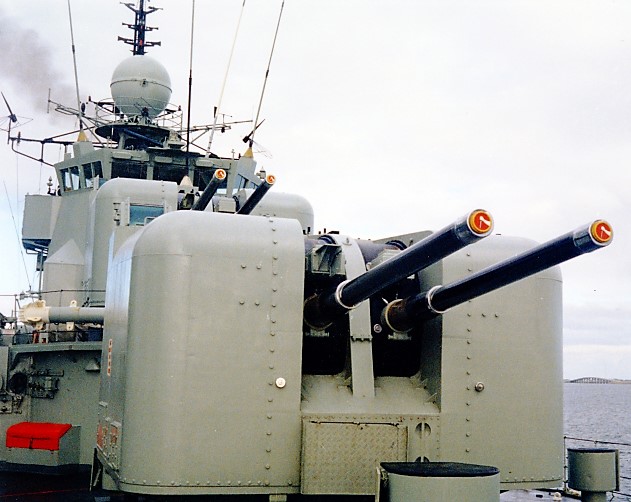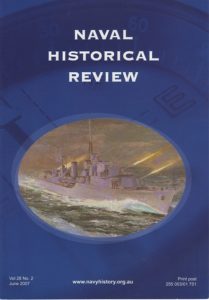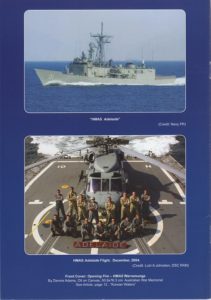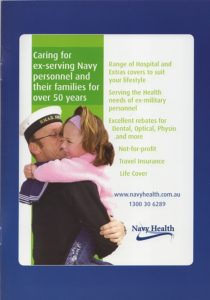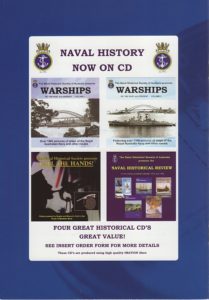By Bjarne (Barney) Kristensen
The 18 August 2023 marked fifty years since the cessation of hostilities in Vietnam (The Vietnam War) with commemorations conducted throughout Australia. In this paper I address my personal service in the HMAS Vendetta 1969 / 1970 tour of duty with the US 7th Fleet.
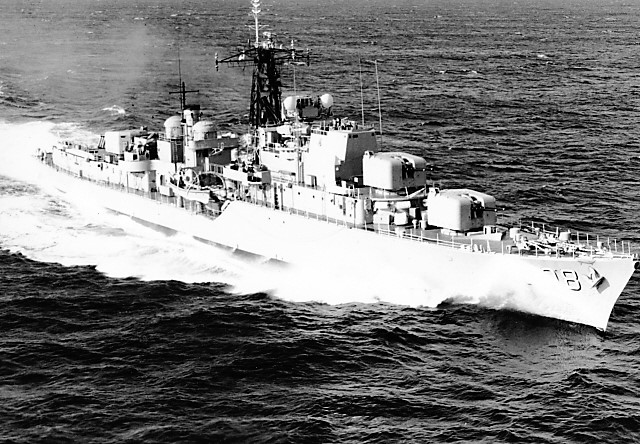
I joined the Royal Australian Navy on the 06 April 1967 in Brisbane, as an adult recruit. Training followed at HMAS Cerberus, Westernport, Victoria some three days after my 17th birthday and seven years after migrating with my parents from Denmark. I barely knew where Australia was, far less the language or customs. I joined Vendetta on completion of my gunnery courses on 17 April 1969, a newly promoted Able Seaman Weapons Mechanic. My part of ship was as Weapons/Electrical storeman and as number one loader port gun Alpha turret crew.
After fifty years with memories fading, my research into the conflict itself, and how and why Vendetta was assigned, was conducted through official records written in a different era. The first problem was accessing records long stored in archives that in some cases were hard to read. The Daring Class destroyer HMAS Vendetta was designed in 1943 constructed in the 1950’s and commissioned in 1958. Vendetta using old technology, was able to perform as well as if not better than the American destroyers designed and built in the 1960’s. Contributing to her success in Vietnam was the Commanding Officer who was not only a charismatic character, capable personal manager and knowledgeable seaman but a larger-than-life character.
What follows are my recollections of Vendetta, her Commanding Officer and crew supplemented with information extracted from the Report of Proceedings (ROP) held by the Australian War Memorial for the period and publications by the Australian Naval Institute and Naval Historical Society of Australia.
HMAS Vendetta
Vendetta, a Daring Class destroyer was designed for the Royal Navy in 1943. Its capabilities included; sub-surface, surface, and air defence. Unfortunately, none of the 24 destroyers ordered (UK 16 and Australia 8) were constructed until after WWII. When construction commenced in the UK in 1947 the numbers had reduced to 12 (UK 8 and Australia 4). Construction in Australia commenced in 1949, with Vendetta commissioning on 26 November 1958.
It wasn’t until Vendetta commenced operations in Vietnam that her 4.5-inch guns displayed their full potential. The ships gunnery team, led by the gunnery officer, LCDR Brian Wilson utilised the basic fire control system of radar direction, cog wheels in the Control Room and the fire control system called (MRS 3) to great effect. Our guns matched the capabilities of the US 5 inch in path range and accuracy.

However, the drawback to the assignment of Vendetta in a US lead operation was the logistic support. Vendetta needed British spare parts, and the ammunition, different to the USNs had to be shipped in from Australia and made available through US supply ships serving the operational area. Similarly, Vendetta’s gun barrels had to be shipped to Subic Bay. Logistics for the mission were all sourced and prepositioned prior the deployment. The US response to these logistic challenges was, “it is only a challenge”.
Commander Eric Eugene Johnston OBE RAN
Commander Johnston was born in Shanghai in China on 29 July 1933. At the age of 18 months his parents moved to South Australia, where his father, a Merchant Captain, joined a shipping company. His mother was Spanish and touted for feeding him well as he was to become affectionately known both in Defence and outside the services as ‘The Big E’. After his father’s death in an accident, his mother moved to Frankston Victoria where he then grew up.
CMDR Johnston joined the Royal Australian Naval College at HMAS Cerberus in January 1947 aged 13 and graduated in 1950. A Cadet Captain and winner of the English prize he was in good company. Out of the 24 who joined, three made Admiral, three Commodore and others became senior officers during a very active and changing period for the RAN both ashore and at sea and with the Royal Navy.
His initial junior officer training was conducted in the UK. After more training back in Australia in RAN ships he returned to the UK for training and service in HMS Maidstone. This was followed by an Australian posting to HMAS Tobruk (II) as an Officer of the Watch (OOW). His third posting in the UK was for the specialist the Long Nuclear, Biological and Chemical Defence course and to sea service with the RN. On completion Johnston returned to Australia, as a Lieutenant Commander and was appointed First Lieutenant of aircraft carrier HMAS Melbourne.
In July 1966 he was posted to HMAS Vendetta as Executive Officer (XO) and in December 1967 promoted to Commander and appointed as XO of the Junior Recruit Training Establishment, HMAS Leeuwin before taking Command of HMAS Vendetta on 05 May 1969.
In Vendetta, Johnston was a force to be reckoned with, a very fair and passionate naval officer, whom the crew loved. He ensured that the ship was at all times ready for operations and when needed, a sporting ship which became known as the “Red Rooster of the Fleet.”
CMDR Johnston was a very experienced naval officer having served in both RN and RAN ships of British design. During the sixties and seventies, he and other members of the Class of 47 were at the forefront of a changing navy. As a Captain he would go on to command the new US designed destroyer, HMAS Perth.
The Vietnam Deployment

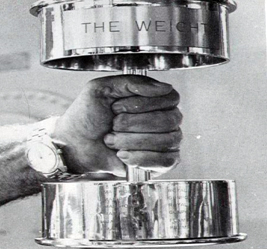
Vendetta departed Sydney after casting off from alongside HMAS Stalwart at 1000 on 15 September 1969 and proceeded for our attachment to the USN 7th Fleet, the first Australian built ship to do so. On departing Sydney Heads, Vendetta broke out a flag which said, “Australian Made”.
Extract from ROP for September 1969,
‘At 0900 on Monday the 15th, you Sir came onboard to address the Ship’s Company prior to our departure at 1000.’
En route to Vietnam Vendetta visited Darwin to fuel and Manus Island for a logistic pick up.
At 0800 on Friday 26 September 1969 Vendetta berthed starboard side to on HMAS Brisbane at the US Naval Base in Subic Bay, Philippines where handover briefings began. Then on 30 September Captain A. A. Willis Commanding Officer, HMAS Brisbane handed over “The Weight” to Commander E. E. Johnston, so commenced our operations with the 7th fleet.
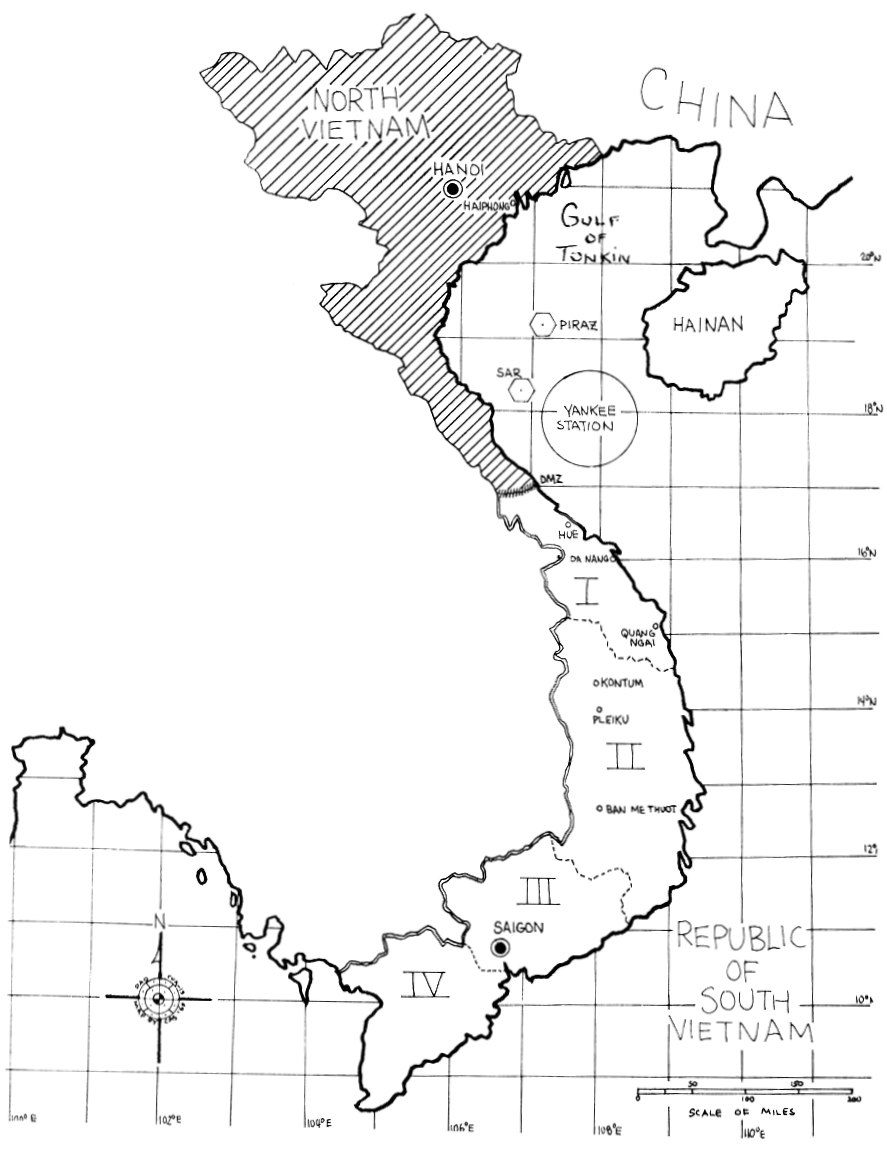
Departing Subic Bay Vendetta set course for our first tasking in South Vietnam in an area off I Corps Tactical Zone (CTZ) near Da Nang. Throughout the deployment Vendetta was assigned targets in all four CTZs along the east coast of South Vietnam.
The ship was organised into two watches, Port and Starboard allowing the ship to be ready for any “call for fire” request 24/7. The crews of the turrets, A, B and X were divided up so that “A” was port watch and “X” was Starboard with “B” turret crew divided between port and starboard watches to enable a second turret to be at immediate readiness for action.
On arrival, in the area of operations (AO), Vendetta conducted an Underway Replenishment (UNREP) for furnace fuel oil. This was our first use of the new probe fuelling setup installed prior to sailing. Vendetta then proceeded to relieve USS Walke on 02 October. Vendetta’s first call for fire occurred on 03 October at 2206 continuing to 0500 on 04 October with 37 targets allocated. We engaged 34 of the targets between range and weather challenges which affected visibility for spotters during the worsening monsoon rain and swell. Later, as the monsoonal weather abated and the wet season turned dry onshore, we continued to experience constant prevailing north eastly weather which did hinder some operations.
The call for fire was constant, from land spotters. One ROP report on the spotters’ reactions to Vendetta’s capabilities read;
“The general atmosphere at firing our first lengthy spotted mission was enlivened by the spotter’s occasional cries of “Bullseye,” “Bullseye,” and “Outstanding”. Throughout Vendetta’s time on the gunline she was tasked in all the Corps Tactical Zone (CTZ) boundaries. 1CTZ was from the demarcation line between North and South Vietnam and the South China Sea, 11 CTZ, the largest area, to down south of the South China Sea. The 111 CTZ going into the delta areas to Vung Tau. The last area IV CTZ into the Gulf of Thailand.”
After constant taskings Vendetta was released on the 24 October, and proceeded to Singapore, arriving on 28 October for a period of Rest and Recuperation (R & R).
After departing Singapore on Friday 07 November, the weather closed in and on Saturday Vendetta was forced to reduce speed to 12 knots before reporting for duty in III CTZ. During the ensuing month the ships routine was one of regular calls for fire from target spotters across all CTZs interspersed by logistic resupply evolutions, primarily VERTREP conducted by the USS Niagara Falls helicopter. The monsoon weather which persisted during the early part of the deployment made a number of replenishment evolutions quite difficult. Another extract from Johnston’s ROP reported the following.
“For the next hour, my Ship’s Company witnessed a superb display of helicopter airmanship as loads were deposited on X deck at 3-minute intervals. Throughout the replenishment both ships were heading into a 12 -to-15-foot sea and, loads were transferred without damage.”
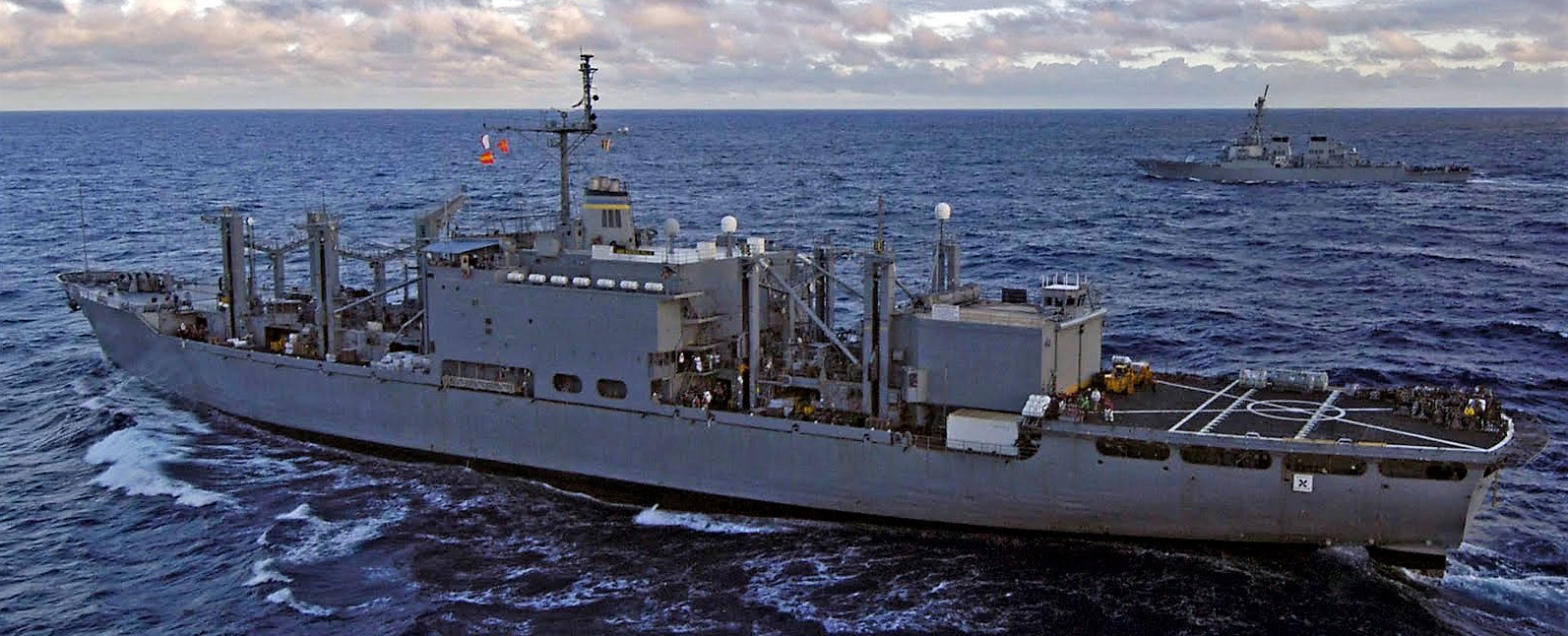
US Navy image.
The routine of replenishment of ammunition, spares and fuel continued, and the weather was a constant problem during the period up to Christmas. Despite this, the high line was efficient, and transfers occurred at a good pace. However, the removal of fuses became a challenge at the dump point in higher sea states.

Continuation of tasking and replenishment kept Vendetta busy until 01 Dec 69 when she departed for R&R, in Taiwan, first in Keelung a city in the north arriving on the 4 December, then on to Kaohsiung in the south 6 to 9 December. We departed Kaohsiung on 10 December for Subic Bay to change barrels.
After casting off on 19 December Vendetta proceeded to anchor for ammunitioning prior to setting for southern II CTZ. The call for fire was frequent with Vendetta relocating as required to engage more than thirty targets. The persistent bad weather had not abated, as reported by the Captain in his December ROP.
“The never-ending north easterly gale accompanied us for the entire passage, which was uneventful apart from gun functioning firings, which were carried out satisfactorily.”
Calls for harassment fire continued into 24 December with the ship kept in two watches as sporadic firefights ashore continued. Christmas was celebrated with a clear lower deck on the quarter deck led by Chaplains Batt and Breslan. This was followed by Christmas Carols led by the XO’s falsetto and bridge personnel.
At 0100 on the 26 December harassment firings commenced on campfires. Calls for fire continued into the New Year with Vendetta in II CTZ conducting firings up and down the sector. On the 15 January 1970 after completing firings, Vendetta set off at 20kts to rendezvous with USS Long Beach where the Commander of the Cruiser and Destroyer Task Group, Seventh Fleet, Rear Admiral HH Anderson USN, embarked by highline. He then toured ship including Alpha turret where I was able to show him the inside workings of the gun.
Once the Admiral disembarked, we set course for Hong Kong arriving on 1 February 1970. On 02 February Vendetta was required to shift berth under the control of a Naval Pilot. Unfortunately, during the move the port propeller guard was damaged necessitating the cropping and replacement of its centre section. After informing the Commander Seventh Fleet embarked in USS Oklahoma City an amended program for Vendetta was approved.
On 16 February Vendetta cast off and made a fast passage to our next area of operation, III CTZ and on arrival commenced operational firings as directed by the spotters. Vendetta was tasked to II CTZ through to March 1970 before being released to transit to Subic Bay arriving for R&R from 7 -13 March 1970. Following this Vendetta operated in II CTZ again until tasked to support operations in IV CTZ in the Gulf of Thailand on 17 March.
I have two memories of this area, one shallow water and two, the lack of manoeuvring room and swinging room at anchor. Vendetta employed a seamanship evolution not often used “Pointing Ship”, to bring two of our three turrets to bear on shore that is, A and B turrets while she remained at anchor. Pointing ship is achieved by shortening cable and then with the use of a joggle shackle secured to a hawser outboard, run down the ships side and secured to stern bollards. Thus, by lowering the cable, the stern will swing to provide firing arcs on forward turrets.
During this period, we experienced an incident with the A turret port barrel (my gun) which failed to fully recover leaving a loaded round up the spout. Hoses were immediately rigged to cool the barrel prior to extraction. The cordite case was then cleared quickly and passed by hand out of the turret and over the side. This was my only real incident with the turret during the deployment.
Vendetta’s final visit to Subic Bay commenced on 26 March 1970 for the return of stores and to prepare for handover. On Sunday 29 March with the Flag Officer Commanding the Australian Fleet, Rear Admiral Stevenson present, Commander Johnston handed the weight to HMAS Hobart, commanded by Captain RC Swan RAN. So ended Vendetta’s deployment to Vietnam.
Conclusion
HMAS Vendetta and her crew achieved a great deal during this deployment. ‘Team Vendetta’ was led by her commanding officer Commander Eric Johnston RAN, a true sailor, he kept the ship humming. Sailors would follow him whatever the state of the ship or sea, there were times when tiredness and our ability to get the job done strained us but throughout it all the man known to all as “The Big E” was there to encourage.
Vendetta was built for the job. Although designed during WWII she was ideal for providing support to troops fighting ashore. Vendetta’s 4.5 guns proved very reliable whereas the US 5-inch/54 guns suffered in-bore explosions on several occasions. As an example, when Vendetta arrived in theatre for handover, HMAS Brisbane personnel were in the process of removing the barrel after an internal burst. Vendetta’s mission was achieved and all her objectives met. In some areas she exceeded her assigned taskings thereby giving the Task Group Commander a most dependable unit.
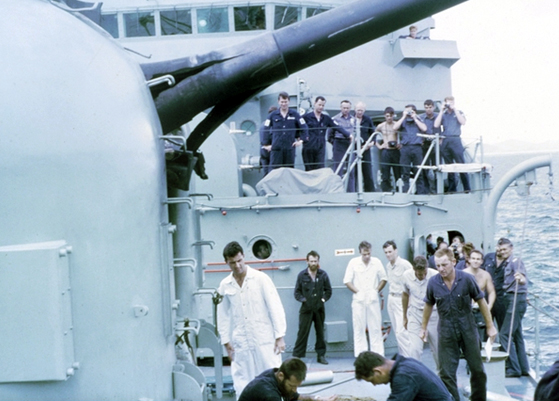
Deployment Statistics
The following are Vendetta’s deployment statistics.
Distance Steamed Sydney to Sydney 30,558 Nautical Miles
Number of fuel Replenishment 26
Number of ammunition replenishment 17
Number of rounds fired 13,295 – 4.5 inch.
414 – 40 mm
Number of targets engaged 1837
Missions 192
Number of days on Gunline 93
Vietcong killed in action 72
Post Vietnam War.
Commander Johnston was promoted to Captain on 31 December 1973 and went on to several other positions in the RAN including; Commanding Officer HMAS Perth and Naval Officer Commanding North Australia Area. He later attained the rank of Commodore just prior to accepting an appointment as Chief Administrator for the Norther Territory.
Following our Vietnam deployment Vendetta deployed again, six months later in company with HMAS Yarra for duties with the Far East Strategic Reserve running out of Singapore for six months. This included escorting HMAS Sydney to Vung Tau to off load personnel and logistics and back load returning personnel for Australia. On completion of this deployment Vendetta commenced a half-life refit which included replacement of upper deck superstructure and enclosing the bridge.
Honours and Awards
Awards for service during Vendetta’s Vietnam tour included;
CMDR E. E. Johnston awarded an OBE,
LCDR V. W. Jones (Weapons Electrical Officer) awarded Mentioned in Dispatches (MID)
CPOCOX T. Collin’s awarded Mentioned in Dispatches (MID).
16 other crew members were awarded ‘Naval Board Commendations’ including myself.
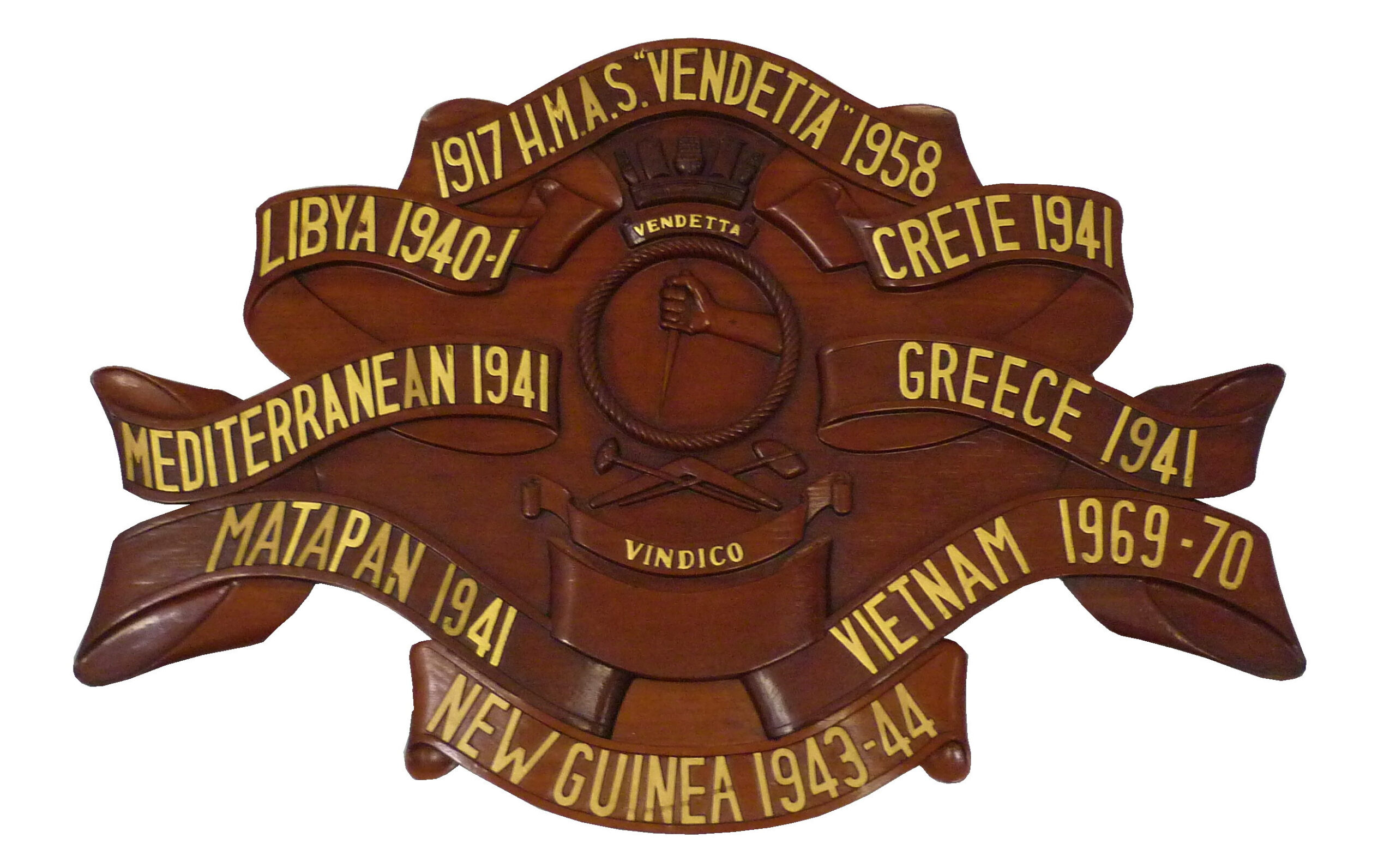
About the Author

Bjarne (Barney) Kristensen
Bjarne Kristensen served in the Royal Australian Navy from 06 April 1967 to 19 September 2019. He, as an adult recruit, trained in HMAS Cerberus and then served as an Ordinary Seaman in HMAS Sydney (III) and as a commissioning crew member of HMAS Stalwart. After completing Able Seaman (Weapons Maintainer) courses in 1969 joined HMAS Vendetta for her 1969/70 Vietnam deployment. Whilst serving at HMAS Creswell he was promoted to Leading Seaman in April 1971 and later commenced Coxswain courses in April 1972 due to changes in Navy. On promotion to LSCOX he joined HMAS Albatross in July 1972. Then followed postings to HMAS Melbourne July 1973 and HMAS Coonawarra in January 1975.
As a Petty Officer he served in HMAS Adroit and in June 1980 as a Chief Petty Officer in HMAS Stirling until selected for Officer training in April 1983. After training at the Britannia Royal Naval College, Greenwich Naval College and at sea in HMS Torque he qualified as an Officer of the Watch (OOW) with a Full Bridge Watching and Ocean Navigation Certificate.
On return to Australia, he served in HMAS Stuart as an OOW, navigator in HMAS Bunbury, Security Officer and 1st LEUT of HMAS Stirling before transferring to the Reserves in April 1987. He rejoined the RAN Navy in 2002 and served in HMAS Bendigo as XO, current operations in Northern Command, XO in HMAS Balikpapan and the Capability Manager in the Patrol Boat Group. Before transferring to the Reserves again in 2012 he commanded HMAS Balikpapan.

